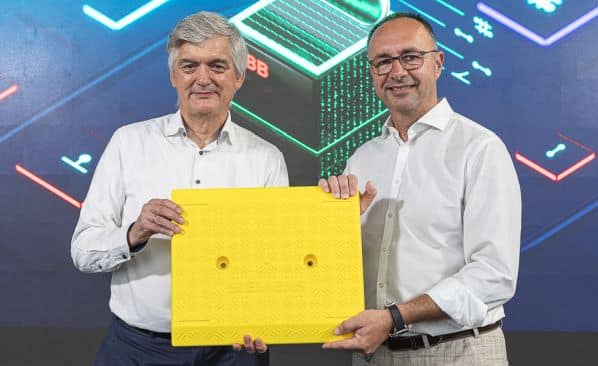AUSTRIAN Federal Railways Infrastructure (ÖBB-Infrastructure) and Siemens Mobility signed a €400m framework agreement in Linz on August 22 for long-term cooperation on the installation of ETCS Level 2 on ÖBB’s so-called “high-level” network.
The deal includes the installation and maintenance of 21 ETCS Radio Block Centres (RBC) on the high-level network by 2038.
ÖBB-Infrastructure will invest €200m in ETCS Level 2 by 2026, and a total of around €900m has been earmarked in the framework agreement for ETCS and train control.
The two parties also announced that, as part of the framework deal, ETCS Level 2 began operation on the Linz - Wels - Vöcklabruck section of the Vienna - Salzburg main line and the Wels - Haiding section of the main line to Passau, Germany, at the beginning of August. The RBC for these two lines is in Vienna with trains digitally monitored and controlled in Linz.
The Vienna - St Pölten section of the Vienna - Salzburg main line together with the Vienna - Breclav and Kufstein - Innsbruck - Brenner lines are already equipped with ETCS.
“To help us handle the expected increase in rail traffic and shift away from roads, we are relying extensively on digital initiatives, and ETCS Level 2 is an enormously important component for railways of the future,” says Dipl-Ing Dr Johann Pluy, CEO of ÖBB-Infrastructure. “The framework agreement signed with Siemens Mobility is based on a Europe-wide tender and we’re looking forward now to working with the best bidder to equip further rail routes with Level 2.”
DS3 safety platform
“The commissioning of this route marks an important milestone in ÖBB’s continuing expansion of ETCS coverage,” says Mr Andre Rodenbeck, CEO Rail Infrastructure at Siemens Mobility. “The use of ETCS Radio Block Centres and our innovative software based DS3 safety platform will significantly increase route capacity and make the Austrian railway system one of the most modern in the world.”
Siemens Mobility says its Distributed Smart Safe (DS3) system is a new software platform for safety-relevant logic.
“The platform is used to migrate existing applications such as ETCS or interlockings to a standard high-performance platform based on COTS, which uses multicore technology and a new communication concept for a fully IP-based system architecture,” Siemens says.
“DS3 will enable ETCS control centres to be further optimised and given greater flexibility. Along with the coupling computer already running on the DS3 platform, which is the link to the interlockings, the ÖBB and Siemens Mobility partnership will also employ DS3 in all of the RBCs.”

